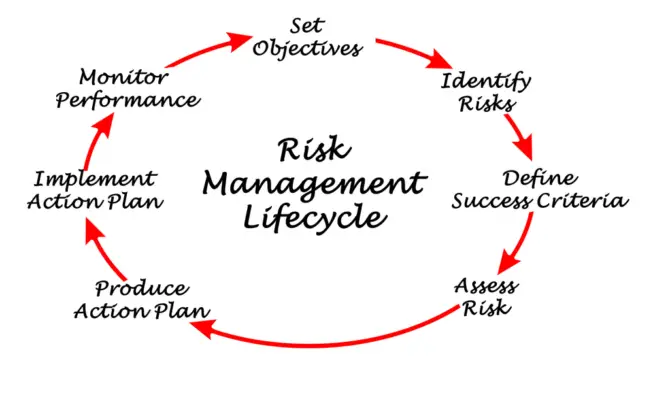The SWAT Risk Assessment Matrix is a tool utilized in risk management to assess potential threats and vulnerabilities. This article provides an overview of the matrix, outlining its purpose and components.
Understanding the SWAT Risk Assessment Matrix is crucial for organizations seeking to evaluate and mitigate risks effectively.
What is a SWAT Risk Assessment Matrix?
The purpose of a SWAT Risk Assessment Matrix is to provide a systematic approach for evaluating and prioritizing risks in a given context.
The history of strategy can be traced back to ancient times, with various military and political leaders employing strategic thinking to achieve their objectives.
Over the centuries, the strategy concept evolved and expanded beyond the military realm to encompass business, politics, and other areas of human activity. Strategic thinking and planning became crucial for organizations seeking to navigate complex environments and achieve competitive advantage.
The Journal of Strategy is a platform for scholars and practitioners to share their research and insights on strategic management. It provides a valuable resource for staying updated on the latest developments and trends in the field.
In the book “Lords of Strategy” by Walter Kiechel III, the author explores the evolution of strategic thinking in the business world, highlighting the contributions of influential thinkers such as Bruce Henderson, Michael Porter, and Bill Bain. The book delves into the strategies employed by major consulting firms and the impact they have had on shaping the business landscape.
Strategy formation refers to the process of developing and implementing a strategic plan to achieve organizational goals. It involves analyzing internal and external factors, setting objectives, and making decisions on how to allocate resources and leverage strengths to gain a competitive advantage.
The concept of strategy questions emphasizes the importance of asking critical and thought-provoking questions in strategic decision-making processes. Organizations can uncover new insights and develop more effective strategies by challenging assumptions and exploring alternative perspectives.
Strengths-based strategy focuses on leveraging and building upon an organization’s existing strengths and capabilities. By identifying and capitalizing on critical strengths, organizations can differentiate themselves from competitors and create sustainable competitive advantages.
Technological strategies involve leveraging technology to gain a competitive edge. This can include developing innovative products or services, adopting new technologies to improve operational efficiency, or utilizing data analytics to enhance decision-making processes.
Community organization refers to the process of mobilizing and empowering individuals within a community to address social, economic, or political issues. It involves creating networks, building relationships, and coordinating efforts to achieve common goals.
Organizational factors such as culture, structure, and leadership can significantly impact strategic planning and execution. Understanding and managing these factors is crucial for successful strategy implementation.
Nonprofit organizations, similar to for-profit organizations, also require strategic planning and management to achieve their mission and objectives.
However, they often face unique challenges, such as resource constraints and balancing social impact with financial sustainability.
Organization development focuses on improving organizational effectiveness and performance through planned interventions and change initiatives. It involves assessing organizational needs, developing strategies for improvement, and implementing change processes.
Public organizations like government agencies and public institutions operate in a complex and dynamic environment. Strategic management in the public sector involves aligning organizational objectives with the public interest and effectively utilizing resources to deliver public services.
Risk of danger refers to strategic decisions or actions’ potential harm or negative consequences. It is important for organizations to assess and mitigate risks to ensure the success and sustainability of their strategies.
SWOT analysis, a widely used strategic planning tool, involves assessing an organization’s strengths, weaknesses, opportunities, and threats. It comprehensively overviews the internal and external factors influencing strategic decision-making.
Human Resource Management plays a crucial role in strategic planning and execution. It involves aligning human capital with organizational objectives, developing talent, and creating a supportive organizational culture that facilitates strategy implementation.
Intrusive and special tactics are strategic approaches that involve unconventional or aggressive means to achieve objectives. These tactics may be employed in specific situations or as part of a broader strategic plan.
Overall, the study and practice of strategy have evolved, encompassing a wide range of disciplines and applications. It continues to be a critical aspect of organizational success, offering frameworks and tools to navigate complex and competitive environments effectively.
It allows for a comprehensive analysis of the likelihood and impact of various risks, enabling organizations to allocate resources and develop appropriate risk mitigation strategies effectively.

Purpose of a SWAT Risk Assessment Matrix
One of the main objectives of a SWAT Risk Assessment Matrix is to provide a standardized framework for evaluating and prioritizing risks to facilitate more effective decision-making and resource allocation.
By utilizing a matrix, organizations can systematically assess various risk factors and allocate resources based on their level of importance and urgency.
The matrix consists of two main dimensions: the likelihood of a risk occurring and its potential impact. These dimensions are divided into five levels, ranging from low to high.
The matrix allows for a comprehensive analysis of risks, enabling organizations to prioritize their planning, tactics, and strategies accordingly.
Process Overview
This will focus on various key points in project management.
These key points include defining the project scope and objectives, identifying stakeholders, establishing priorities and goals, identifying risks and threats, and assessing the impact and probability of occurrence.
These steps are essential for effective project planning and risk management.
By systematically addressing these aspects, project managers can ensure the project is aligned with its intended goals.
They can also ensure that stakeholders are involved and satisfied and potential risks are identified and managed appropriately.
Defining the Project Scope and Objectives
Defining the project scope and objectives involves clearly outlining the boundaries and goals of the project. This process is essential for effective strategic planning and project management.
It begins with a situational analysis, which includes conducting a SWOT analysis to identify internal strengths and weaknesses and external factors that may impact the project. By understanding the project’s scope, managers can establish realistic objectives and determine the resources required for successful completion.
Additionally, an estimate of risk is crucial to assess the potential dangers and challenges during project execution.
Identifying Stakeholders
Identifying stakeholders is a crucial step in project management as it allows for a comprehensive understanding of the individuals or groups with an interest or influence in the project. This knowledge is essential for effective project planning, communication, and risk management.
When identifying stakeholders, project managers should consider the following:
- SWOT Analysis: A SWOT analysis helps identify stakeholders with strengths, weaknesses, opportunities, or threats that can impact the project. This analysis allows project managers to assess the potential risks and benefits associated with each stakeholder.
- Risk of Harm: Identifying stakeholders who may be at risk of harm or negatively impacted by the project is crucial for mitigating potential negative consequences. Understanding these risks helps project managers develop strategies to minimize harm and ensure stakeholder satisfaction.
- Control Risk: Identifying stakeholders who can control or influence project outcomes is essential for effective stakeholder management. By involving these stakeholders early on, project managers can gain support and ensure their needs are addressed throughout the project lifecycle.
Establishing Priorities and Goals
Establishing priorities and goals is crucial in project management as it allows for a clear direction and focus on achieving desired outcomes.
One effective tool that can aid in this process is the SWOT analysis, which assesses internal factors such as strengths and weaknesses and external opportunities and threats.
Project managers can identify potential market opportunities by conducting a SWOT analysis and developing strategies to capitalize on them. This analysis also helps in the formation of strategies for corporate planning and management planning.
Once priorities and goals are established, project managers can allocate resources, assign tasks, and monitor progress accordingly. This systematic approach ensures that all efforts are aligned towards achieving project objectives, ultimately leading to successful completion.

Identifying Risks and Threats
One key aspect to consider in project management is the evaluation of potential challenges and hazards that may impede the successful completion of the project.
To effectively identify risks and threats, project managers can employ various strategies such as conducting a SWOT, company, and external analysis.
These approaches help in understanding the project’s strengths, weaknesses, opportunities, threats, competitive situation, and market shifts.
Additionally, by performing a situation audit, project managers can evaluate negative factors impacting the project’s progress. Limited resources can also pose a challenge, and it is important to assess how these constraints may affect the project’s execution.
Assessing Impact and Probability of Occurrence
Evaluating the potential impact and probability of occurrence of risks and threats is crucial in project management to effectively plan and implement strategies for their mitigation.
Project managers often utilize tools such as the SWOT analysis and risk assessment matrix to assess the impact and probability of occurrence.
The SWOT analysis helps identify a project’s strengths, weaknesses, opportunities, and threats, allowing for a comprehensive understanding of potential risks and threats.
The risk assessment matrix, on the other hand, provides a systematic approach to quantify and prioritize risks based on their impact and probability of occurrence.
By assessing the impact, project managers can determine the potential consequences of a risk, such as financial loss or project delay.
Simultaneously, by evaluating the probability of occurrence, project managers can estimate the likelihood of a risk happening, enabling them to allocate resources and develop appropriate strategies for risk mitigation.
Developing Countermeasures and Mitigation Strategies
Developing countermeasures and mitigation strategies requires a comprehensive understanding of potential risks and threats. This understanding allows project managers to allocate resources and develop appropriate strategies for risk mitigation.
Project managers can utilize various tools and techniques to develop these strategies effectively. Two commonly used tools are the SWOT analysis and risk assessment matrix.
These tools provide a structured framework for identifying and analyzing a particular project or situation’s strengths, weaknesses, opportunities, and threats.
Based on the results of these analyses, project managers can develop countermeasures and mitigation strategies. These strategies should align with the external situation, organizational policy, and public policy.
By considering these factors and utilizing the insights gained from the SWOT analysis and risk assessment matrix, project managers can effectively develop powerful strategies to mitigate potential risks and threats.
Allocating Resources to Address Risks
Allocating resources involves determining where to invest time, money, and personnel to mitigate risks and protect the organization’s market position and competitive advantage. This process requires a strategic approach that aligns with the organization’s objectives and future operations.
To allocate resources effectively, organizations should consider the essentials of strategy, which include understanding the current market conditions, identifying opportunities and threats, and developing a clear strategy for the operations plan.
By analyzing the risks identified in the SWAT risk assessment matrix, organizations can prioritize allocating resources to address the most critical risks and ensure that the necessary measures are in place to mitigate them.
The table below provides a visual representation of the allocation of resources to address risks:
| Risks Identified | Resource Allocation | Mitigation Strategies |
|---|---|---|
| Risk A | High | Implement controls |
| Risk B | Medium | Develop contingency plans |
| Risk C | Low | Monitor and review regularly |
Components of a SWAT Risk Assessment Matrix
Discussing the categories of risk factors is an important aspect of understanding the components of a SWAT Risk Assessment Matrix. Risk factors can be categorized based on their nature and impact.
These categories provide a systematic framework for identifying and analyzing potential risks in different environmental, social, economic, and technological factors.
Categories of Risk Factors
One way to categorize risk factors in the SWAT risk assessment matrix is based on their severity and likelihood. This categorization helps organizations better understand and prioritize the potential risks they may face.
The categories of risk factors are as follows:
- High Severity, High Likelihood: Risks in this category pose a significant threat to the organization and are highly probable. These risks require immediate attention and mitigation strategies to minimize their impact.
- High Severity, Low Likelihood: Risks in this category have a high potential impact but are less likely to occur. Organizations should still prepare contingency plans and closely monitor these risks to prevent major disruptions.
- Low Severity, High Likelihood: Risks in this category may occur frequently but have a relatively low impact on the organization. However, organizations should not completely ignore these risks and implement preventive measures to reduce their occurrence.
Frequently Asked Questions
What Are the Different Factors Considered in a SWAT Risk Assessment Matrix?
Factors considered in a SWAT risk assessment matrix include but are not limited to the threat level, potential harm to civilians and law enforcement, the likelihood of violence, the presence of weapons, and the need for immediate action.
How Is the Risk Level Determined in a SWAT Risk Assessment Matrix?
A SWAT Risk Assessment Matrix determines the risk level by considering various factors such as threat severity, vulnerability, and potential consequences.
These factors are quantified and assigned corresponding levels, then used to determine the overall risk level.
Are There Any Specific Guidelines or Standards to Follow When Using a SWAT Risk Assessment Matrix?
There are specific guidelines and standards to follow when using a SWAT risk assessment matrix. These guidelines provide a framework for assessing risk levels and help ensure consistency and accuracy in the assessment process.
How Often Should a SWAT Risk Assessment Matrix Be Reviewed and Updated?
The frequency of reviewing and updating a SWAT risk assessment matrix depends on various factors, such as the dynamic nature of the situation being assessed, changes in threat levels, and the availability of new data or information.
Can a SWAT Risk Assessment Matrix Be Used for Other Risk Assessments, or Is It Specific to SWAT Teams?
The suitability of using a SWAT risk assessment matrix for other types of risk assessments is subject to investigation. Further research is needed to determine if the matrix’s structure and criteria can be adapted effectively to assess different types of risks.

Conclusion
The SWAT Risk Assessment Matrix is a valuable tool for identifying and evaluating potential risks in various environments. It involves a systematic process that encompasses several key components.
Organizations can effectively assess and prioritize risks by utilising this matrix, leading to informed decision-making and proactive risk management strategies.
The SWAT Risk Assessment Matrix proves to be an essential tool in mitigating and managing risks comprehensively and efficiently.

Chris Ekai is a Risk Management expert with over 10 years of experience in the field. He has a Master’s(MSc) degree in Risk Management from University of Portsmouth and is a CPA and Finance professional. He currently works as a Content Manager at Risk Publishing, writing about Enterprise Risk Management, Business Continuity Management and Project Management.

